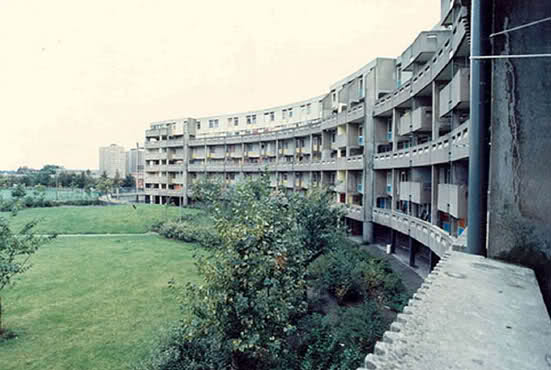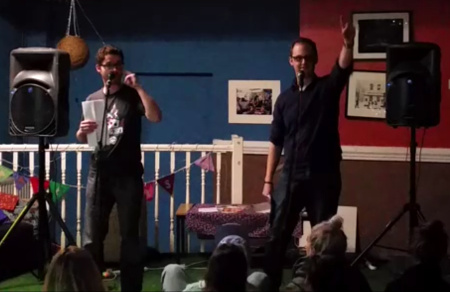Blast from Hulme’s past
Article published: Sunday, February 17th 2013
We’ve come across two excellent videos of the Hulme Crescents recently, and would like to share them with you.
The first, There’s No Place Like Hulme, is a short World in Action feature from 1978. At only eight years old the immense Crescents, built to rehouse people from the 1960s slum clearances, were already viewed as a horrible mistake.
The stiff upper lipped BBC team interview families who explain how the deck-access blocks were ill-maintained and neglected.
“If the lifts go you’ve just got to get down and up as best you can”, says one mother. “With a trolley in one arm and a baby in the other.”
There are beautiful panning shots and reports of crime, unemployment and violence. Foreshadowing right-to-buy, a bearded probation officer complains there’s “no sense of ownership, no sense of property or belonging”.
Manchester City Council began moving families out of the area. The Crescents became part dumping ground and part colony of squatters, addicts, artists and the sorts of people who the council would probably now refer to as complex residents.
The next film, Dancing in the Ruins by Nick Wallbank, follows some of the new inhabitants shortly before the Crescents were demolished in the mid 1990s.
It gives off a feel of the potential and vibrancy of the era, the last in which Manchester produced a truly great creative scene.
After the demolition Hulme became the prototype of the new wave of civic regeneration, which promised and still promises to leave the poverty and decay of the old ways behind it.
The two films show you seeds of today’s Manchester in the backlash against the derelict council housing projects of the 1960s and the co-option of the hedonist energy of the 1990s by a Blairite generation of municipal politicians.
They both posses an aura of potency and the sense that great changes are about to break upon them, that anything could happen. That is something the city today has lost.
Richard Goulding
With thanks to www.exHulme.co.uk and Ally Fogg for pointing these out
More: Blog
Comments
-
Manchester lost a lot of its vibrancy because of the lack of real consultation. As in Hulme, it was not the local residents who had a say, but as studies have shown, the educated middle-class, who had moved into the area. So, instead of nurturing Manchester’s talent, they have imposed what they consider to be important. It was not a regeneration, but a degeneration, which increased poverty, deprivation and unemployment. And, they have continued this failed model, or not involving the local community, every where else, Ancoats, Ardwick, Beswick, Bradford, Lower Openshawe, just to mention a few. This is a link to a report, which is a sanitized assessment of Hulme, 10 years on: http://www.surf.salford.ac.uk/cms/resources/uploads/File/Hulme.pdf
Comment by Patrick Sudlow on February 17, 2013 at 8:52 pm -
Thanks for mentioning my film.
Comment by Nick Wallbank on February 17, 2013 at 9:31 pm
Nick -
It’s a shame something like this could not be shown at Manchester International Festival – rather than a load of musicians/artist/performers who’s connection with the city is thin a best.
Comment by jimmy on July 8, 2013 at 1:36 pm -
フレッド マーク 時計 人気 http://SFchuanqi.onlinechild2013.com/
Comment by マーク 時計 人気 on December 1, 2013 at 6:51 pm
The comments are closed.




